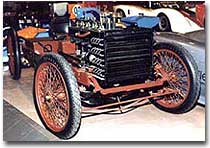Not known Incorrect Statements About Automobiles - Financial Times
Some Known Questions About The Life of the Automobile: The Complete History of the Motor.
One of the very first "genuine" autos was produced in 1873 by Frenchman Amde Bolle in Le Mans, who constructed self-propelled steam road lorries to transport groups of travelers. The first car appropriate for usage on existing wagon roadways in the United States was a steam-powered car developed in 1871 by Dr.
Carhart, a minister of the Methodist Episcopal Church, in Racine, Wisconsin. [] It induced the State of Wisconsin in 1875 to provide a $10,000 award to the very first to produce a practical replacement for using horses and other animals. They specified that the car would have to keep a typical speed of more than 5 miles per hour (8 km/h) over a 200-mile (320 km) course.
While seven vehicles were signed up, only two began to compete: the entries from Green Bay and Oshkosh. The automobile from Green Bay was quicker, however broke down prior to completing the race. The Oshkosh ended up the 201-mile (323 km) course in 33 hours and 27 minutes, and posted an average speed of 6 miles per hour.
An Unbiased View of Automobile - definition of automobile by The Free Dictionary
Try This
Pre WWII Steam-powered road cars, both vehicles and wagons, reached the peak of their advancement in the early 1930s with fast-steaming lightweight boilers and efficient engine styles. Internal combustion engines likewise developed significantly throughout WWI, ending up being easier to run and more trusted. The development of the high-speed diesel motor from 1930 started to replace them for wagons, sped up in the UK by tax modifications making steam wagons uneconomic overnight.


Post-WWII Whether steam cars will ever be reborn in later technological ages stays to be seen. Publications such as continued to explain them into the 1980s. The 1950s saw interest in steam-turbine automobiles powered by small nuclear reactors [] (this was likewise real of aircraft), but the threats fundamental in nuclear fission innovation quickly eliminated these ideas.
In 1834, Vermont Thomas Davenport, the developer of the first American DC electrical motor, installed his motor in a small design car, which he operated on a short circular electrified track. In 1835, Professor Sibrandus Stratingh of Groningen, the Netherlands and his assistant Christopher Becker created a small-scale electrical car, powered by non-rechargeable main cells.
UNDER MAINTENANCE